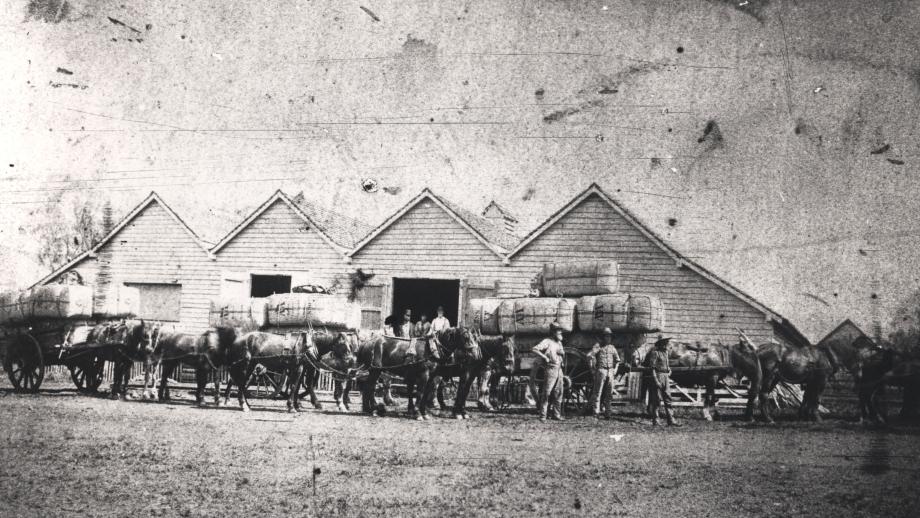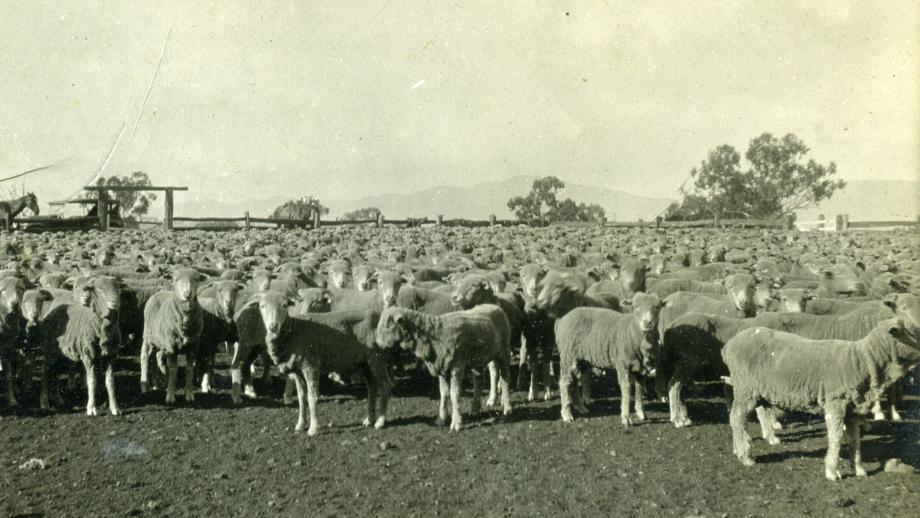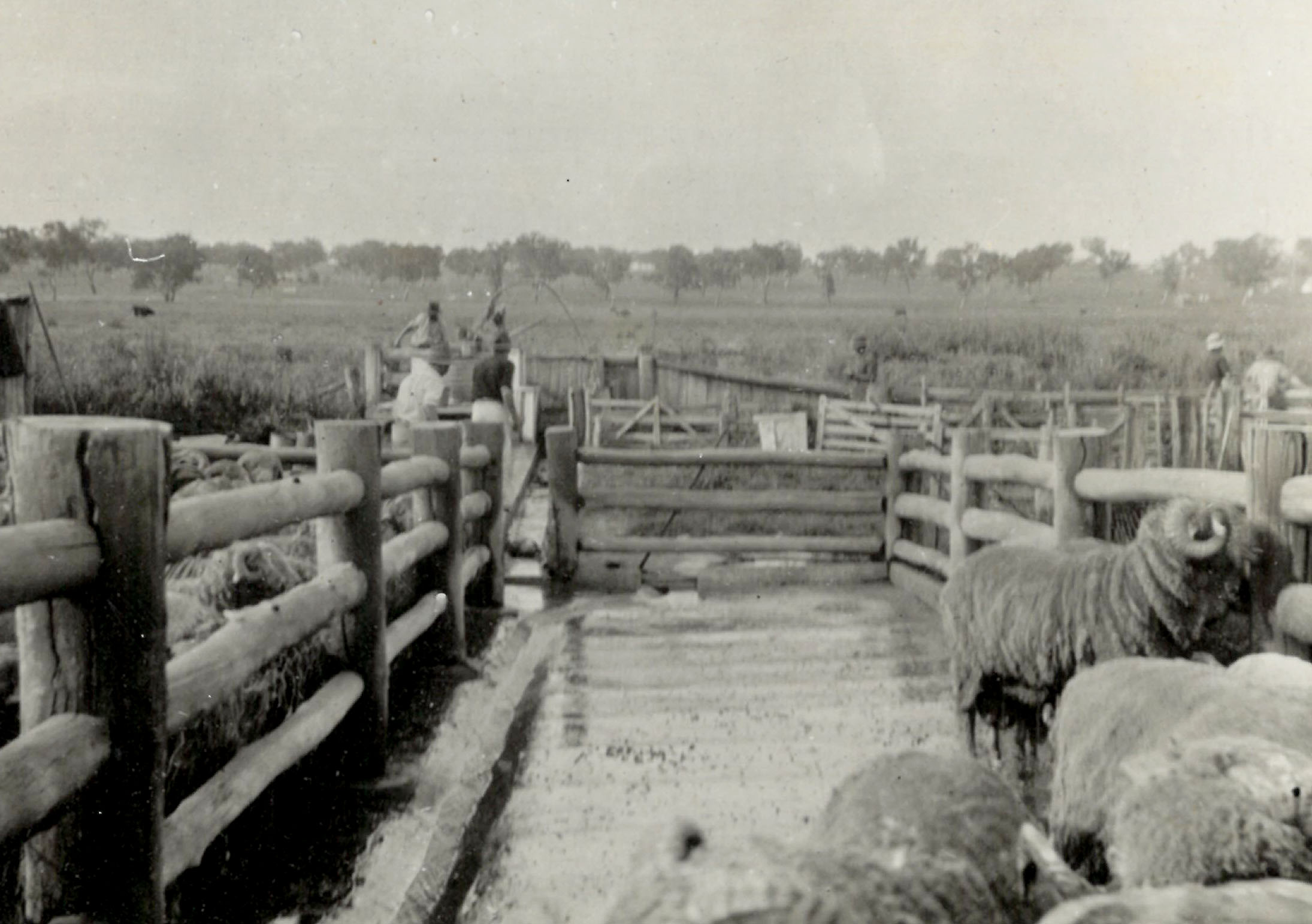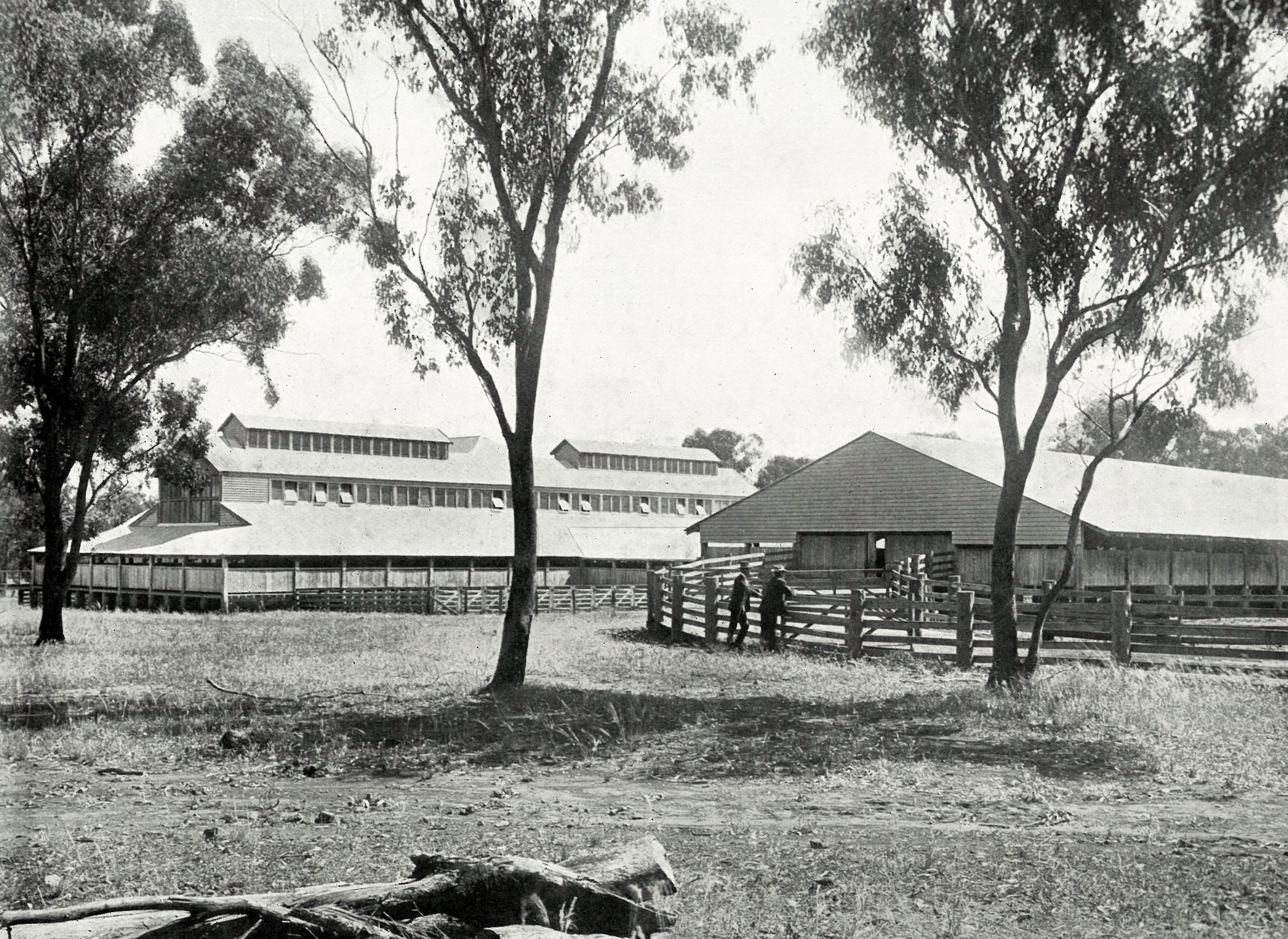Sheep
The Australian Agricultural Company’s first shipment of livestock arrived in Australia in November 1825 and included 726 sheep, 15 thoroughbred horses, and 12 head of cattle.
With the Company founded for the purposes of producing and selling high-quality wool on the London market, naturally sheep were originally the Company's primary focus. The Company’s sheep were shepherded in flocks ranging from 500-3,000, depending on the nature of the land and the value of the sheep. For example, the land at the Port Stephens Estate was mountainous and housed smaller flocks compared to the Warrah Estate where the land was very flat. Stud rams of much higher value were kept in very small flocks. The Company flock mainly comprised Merinos, though there were experiments with Border Leicesters in the 1840s.
The Company established sheep “stations” with a shepherd (or two) and a hut keeper. At first the “stations” at Port Stephens were located around Stroud and Booral. However, these stations steadily moved north and west, onto the church and school Lands and the Dividing Range as it became clear that coastal New South Wales was not suited to sheep. The same sheep that would deteriorate at Port Stephens, thrived on the Peel Estate as well as the Warrah Estate once more wells and dams were established.
From the 1860s, fencing and paddocking were introduced on the Company’s estates in addition to dams and ringbarking. This required enormous investment but greatly reduced the numbers of employees needed, with many shepherds replaced by fewer stockmen.
The Company’s sheep were washed before shearing to remove the weight of the dirt and grease (lanolin). At Port Stephens the sheep were washed first in the Karuah River south of Booral, and later at the Washpool which was constructed on the road between Stroud and Dungog. After standing on clean grass to dry, the sheep were taken to the shearing shed. The first shearing shed at Port Stephens was at Worwhy south of Booral, then at Telligherry, north of Stroud.
At the Peel Estate, the sheep were washed in the Nundle River when possible. During drought, the dry sheep were sent along the road known as The Company Line for shearing at the Port Stephens Estate. The wool shorn “in the grease” at the Peel was then sent to Morpeth for scouring.
Sheep washing at the Warrah Estate was always difficult owing to the flatness of the land. The Company experimented with a variety of methods including spouts (the water pumped by a steam engine), and various ‘cleaners’ including caustic soda.
In the 1880s, with the coming of the railways and larger ships, the weight of the greasy wool became less problematic. It was found that wool “in the grease” travelled better, and the purchasers at the auctions in England could treat it to suit their own requirements. Consequently, the need to wash the wool diminished.
Until the 1890s the Company’s sheep were shorn using hand blades. In the 1880s with moves towards machine shearing, the Company offered the rivals Frederick Wolseley and John Suckling the chance to install 25 machine shearing units each. Both Wolseley and Suckling had been developing shearing machines to replace the old hand shearing method. Wolseley refused the Company’s offer and consequently 50 Suckling machines were installed at Warrah. The experiment failed, and the East Warrah shed returned to blade shearing. Having observed this experiment at Warrah, the Peel River Land and Mineral Company Commissioner Phillip Gidley King introduced Wolseley machines to the new Woolshed at the Peel Estate at a cost of £928, with the first sheep shorn using the Wolseley machines in September 1889. Australian Agricultural Company Commissioner Jesse Gregson did not wish to use machines in the new Woolshed at Windy Station but was overruled by the Company Directors.
Both the Australian Agricultural Company and Peel River Land and Mineral Company wool clips were sold on the London Market. The wool sales provided the funds to pay dividends to shareholders and the sale of beef and coal in Australia provided the working funds for both companies, occasionally allowing the excess sums to be remitted.
A number of factors contributed to the Company shifting its focus away from sheep and towards cattle, including an increasing number of land resumptions across the Warrah and Peel Estates throughout the early to mid-1900s, the compulsory acquisition of the Company's wool clip during the war years, a shortage of workers, and the realisation that cattle had become a more lucrative investment.











